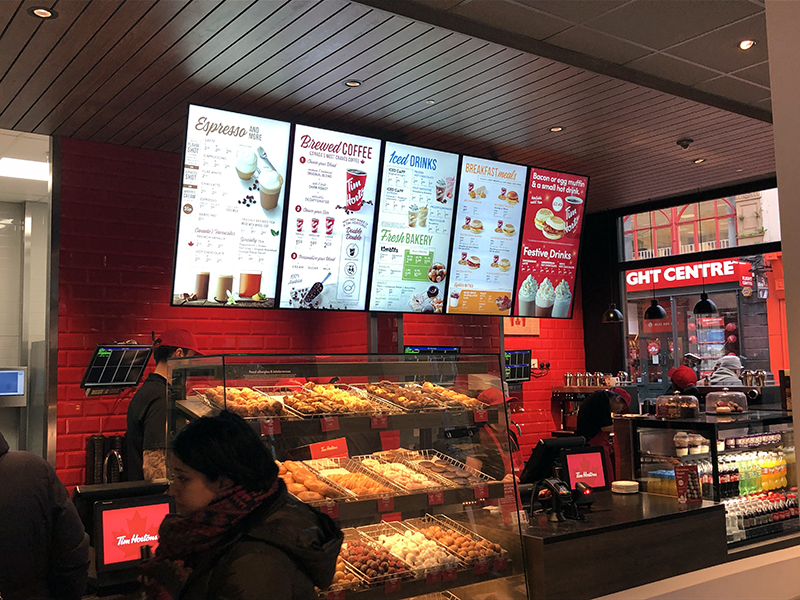Digital menu boards are now widely used in the food and hospitality industry to enhance customer experience, boost sales, and raise brand awareness. Here are some of the many ways that investing in a digital menu board or LED wall can increase sales for your hospitality business.
The content can be updated easily
Printed or handwritten menus are laborious and time consuming to update, and take up labour and resources. Digital menus can be easily refreshed and updated within minutes, helping to keep the most relevant information in front of customers.
LED displays are eye-catching and easy to read
The brightness and clarity of a digital display means that the content can be read easily from a distance, which is essential for a menu board that naturally needs to convey a lot of written information.
They can also be used to display high quality images to add to the visual appeal of the menu and help customers to see exactly what they are ordering.
Highlight deals and promotions
Digital menu boards are the perfect opportunity for cross-selling and up-selling techniques. For example, when a customer orders a pizza, suggest adding garlic bread and a bottle of wine, or upgrading the size or topping of the pizza to a more expensive version.
Make use of dynamic pricing
Digital displays allow businesses to make real time updates of their pricing. This is sometimes referred to as dynamic pricing, and it allows a business to make strategic adjustments to the pricing based on factors such as supply and demand, how busy the venue is, time of day, and so on.
This enables the business to remain competitive and to maximise profits at peak times, and offer discounts or promotions to drum up custom during quieter periods.
Target the seasons and time of day
Take advantage of the fast and easy update process by adjusting the content to align with the seasons, the time of day, or even the weather on any given day.
For example, in the morning you will want to target popular breakfast items such as cereal, bacon rolls, coffee, and so on. At lunch time you may want to promote meal deals such as sandwiches, a drink and a snack.
On warm sunny days you can prioritise ice cream and frozen drinks, and on frosty days you may wish to forefront soups and hot drinks. It may be that you can even tailor the menu board to align with a local event, such as football fans looking for chips or burgers before a big match.
Data analysis
Digital menu boards can employ software to collect data on precise ordering patterns, allowing the business to better understand customer preferences. This can provide useful guidance on which are the most popular items, and how the demand fluctuates with the time of day or seasons.

